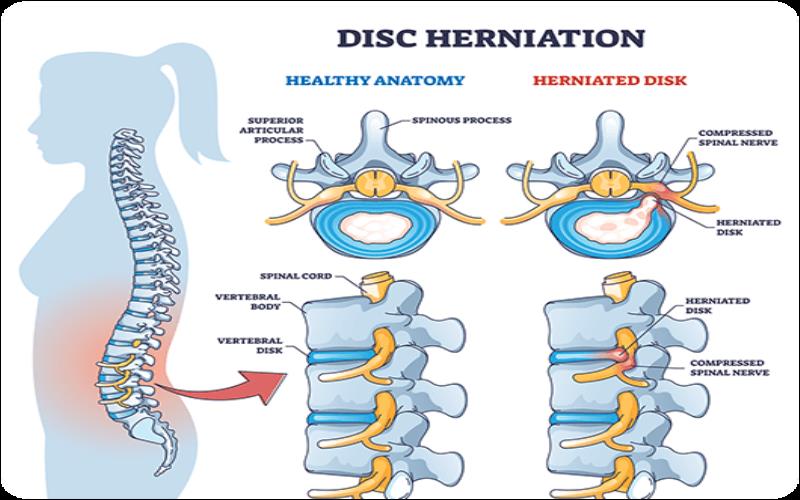If you are diagnosed with a slipped disc, you must be experiencing severe pain and discomfort while carrying out your day-to-day activities. When you consult healthcare providers for the best slipped disc treatment, many suggest traditional treatments like medication and surgery. These methods are effective, but they are also invasive and expensive. Fortunately, various alternative methods are available to treat slipped discs that can alleviate pain and promote faster healing. One of those methods is physiotherapy.
A slipped disc, synonymous with a herniated or ruptured disc, occurs when the inner material of a spinal disc protrudes through a tear in the outer layer, often leading to pain and nerve compression. For slipped disc treatment, physiotherapy has emerged as a valuable and non-invasive option for managing and treating the symptoms. It involves core exercises, electrotherapy, postural analysis, myofascial release, endurance training, and taping. These exercises are performed under the guidance of experts and after a detailed assessment of their health.
Let us learn about this non-invasive slipped disc treatment method in detail.
Non-Surgical Slipped Disc Treatment
1. Core Exercises For Slipped Disc
Core muscles in the human body play a vital role in stabilizing and providing support to the lower spine. Weakening of these core muscles can be one of the primary reasons for slipped discs. Therefore, it is essential to strengthen the core muscles, as once they are weak, they can increase the load and strain on the spine. With the help of core muscle strengthening exercises, you can reduce strain on the back and alleviate pain.
2. Endurance Training
The primary aim of this training is to enhance endurance and reduce fatigue in the back muscles. It is accomplished by incorporating low-impact aerobic exercises into your routine, such as walking, cycling, or swimming, to increase blood flow, which reduces impact on the spine and promotes faster healing.
3. Myofascial Release
The skilled therapists apply slow and sustained manual pressure to the person’s back to stretch and relax the strained back muscles. The technique involves gentle manipulation and sustained pressure on affected areas to release tension in the fascia, promoting relaxation of the associated muscles. The myofascial release is a hands-on technique that greatly simplifies pain relief for the person.
4. Postural Analysis And Correction
Poor posture is becoming one of the most common causes of back pain. It leads to unnecessary strain on the back, causing pain and discomfort. You can consult with the physiotherapist for postural analysis and correction to be done appropriately. They will analyse your posture and suggest adjustments that help release unwanted stress on the spine.
5. Taping or K-Tape
Taping, K-tape, or Kinesio taping is an effective non-surgical treatment for the slipped disc. An elastic tape is applied to the affected area, putting tension on the skin and repositioning and lifting it. It increases the blood flow in the back, provides immediate pain relief, and promotes healing.
6. Electrotherapy
It is another method for treating slipped discs that is effective, comfortable, and provides immediate relief from pain.
Conclusion
In conclusion, use these prolonged therapies for slipped disc treatment, but if the pain persists, you must seek medical attention. For more non-surgical slipped disc treatment options, you can visit renowned healthcare centers like ANSSI Wellness and get advice from medical professionals.

